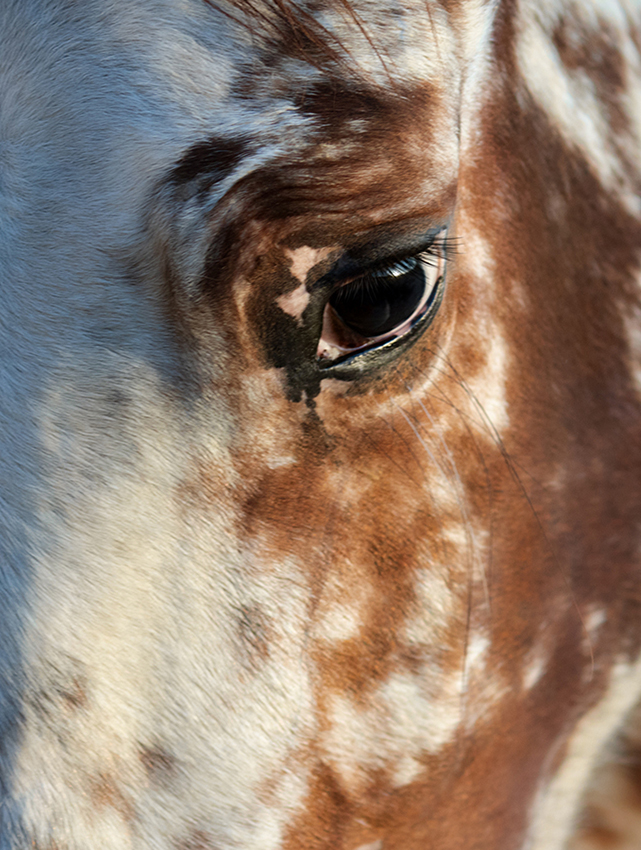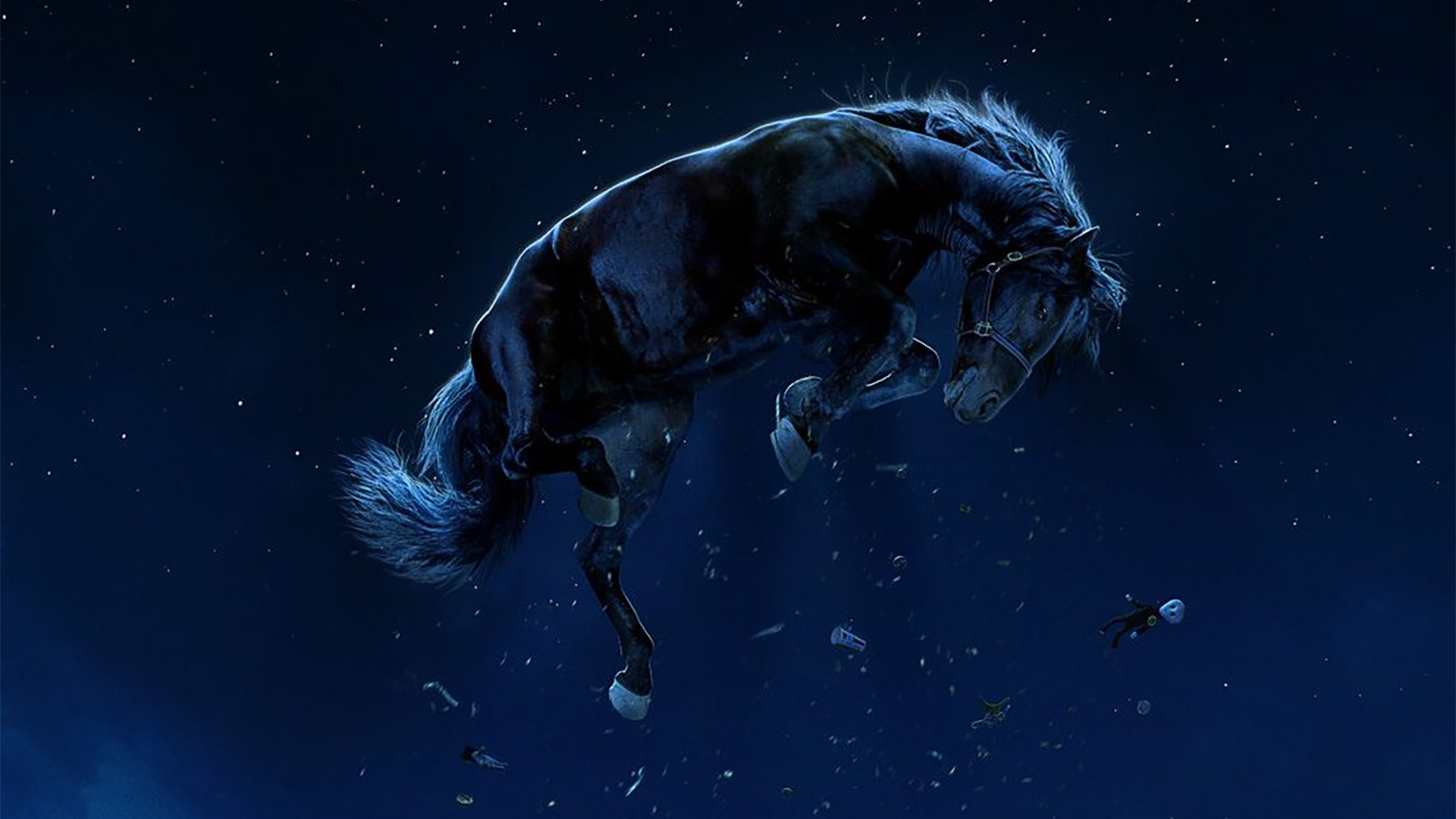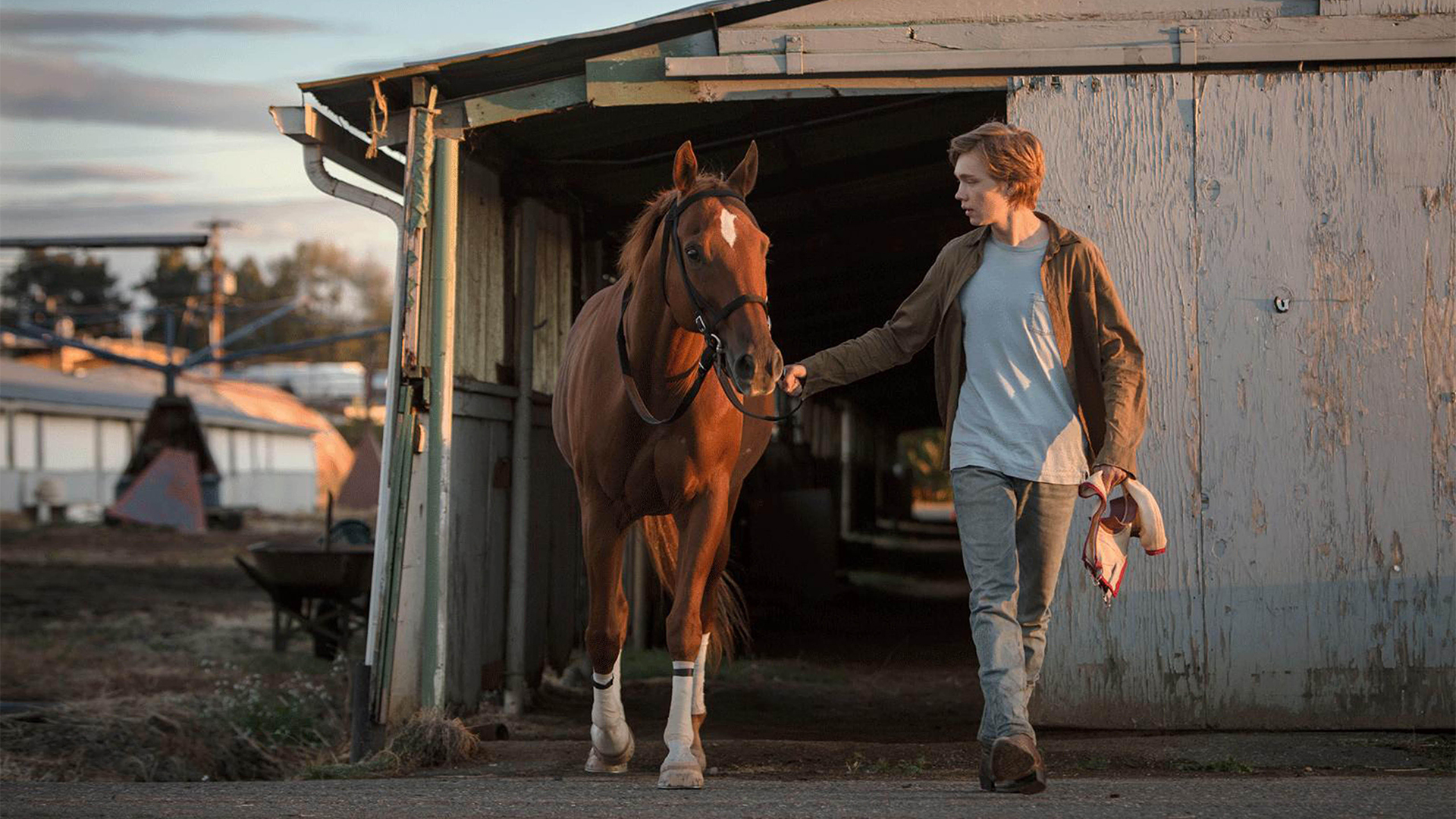A 1960s Western starring Marlon Brando and a modern flick centred around a little mining town in New Mexico not only share the same name – in both cases, the horses are the stars.
‘THE APPALOOSA’ –1966
Directed by Sidney J. Furie and starring Marlon Brando
‘APPALOOSA’ –2008
Starring Viggo Mortensen, Renee Zellweger, Jeremy Irons and Ed Harris (who also directed)
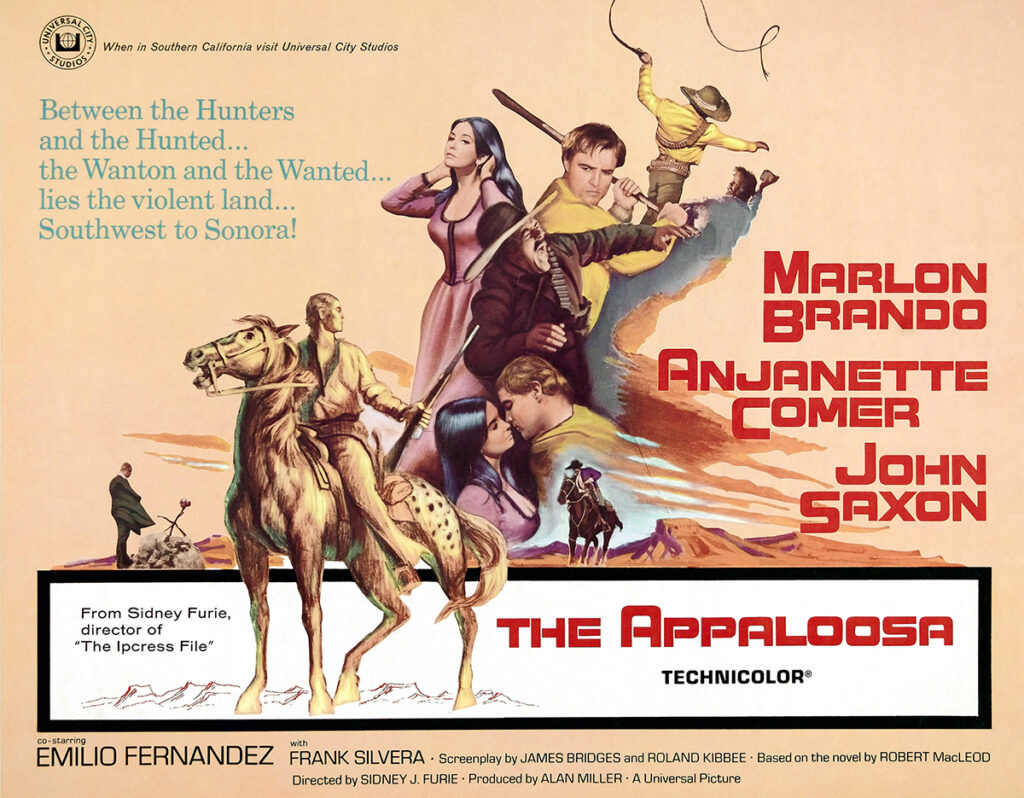
The film poster for ‘The Appaloosa’ (1966). Image by Pictorial Press Ltd/Alamy Stock. Photo.
“The 1966 picture’s real star is
Osaca, played by Cojo Rio, a
registered Appaloosa stallion.”
Marlon Brando plays Matt Fletcher, a Mexican/American buffalo hunter who plans to start a breeding farm. A bandit steals his prized Appaloosa stallion, and Fletcher crosses the Mexican border determined to get revenge.
The film opens with classical Western images of a lone rider travelling through the desert wilderness. Close-ups reveal Brando on his spotted horse (named ‘Osaca’). The hunter is wearing a goat’s hair wig and beard, and a trilby hat. He thankfully dispenses with these items further into the movie.
Originally Cojo had been purchased as a yearling by Jack and Sylvia Martinez of Centurion Ranch, Sun Valley, California. As a six-year-old he was chosen for the lead role by the movie’s director Sidney J. Furie. Although he was naturally a bay-marked stallion, Furie wanted him darker. Consequently, his solid colour was dyed black by the make-up department, as were his blanket spots.
The trainer was Bobby Davenport whose later credits included Bonanza, Lassie and The Three Amigos. A few other similarly marked appys were used in stunts on location but the majority of the work was done byCojo.
TRIVIA: “In 1975 Idaho declared the Appy as their state horse thanks to the contribution the Nez Perce Tribe had in cultivating the breed. It’s nice to know Idaho had more going for it than potatoes.” – Rebecca Berry, The Horse Network.
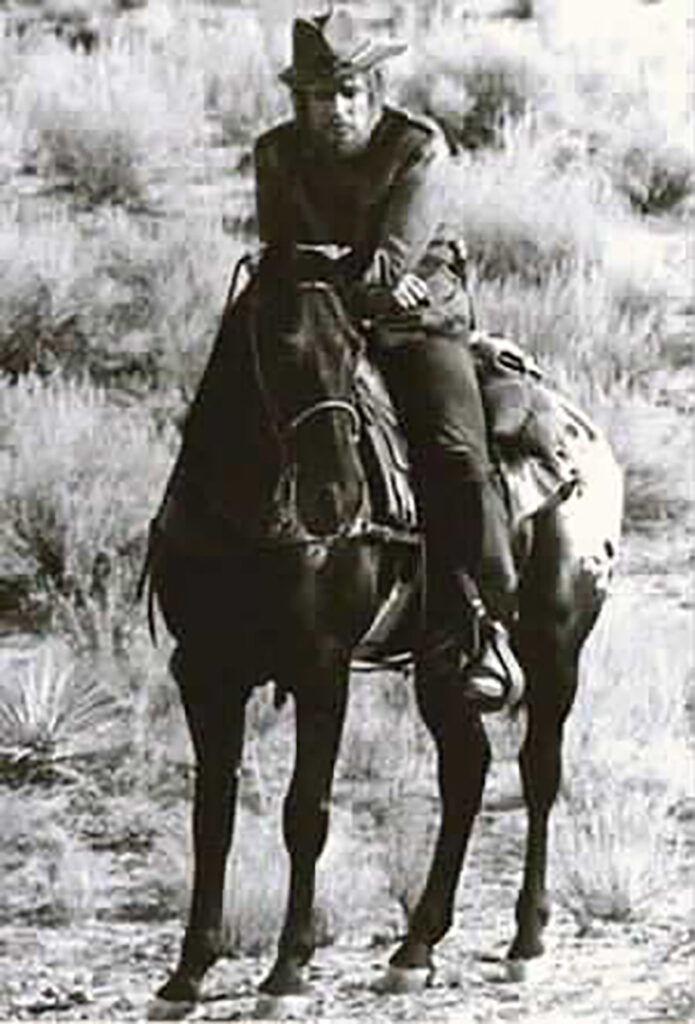
Marlon Brando in the saddle for ‘The Appaloosa’ (1966). Image supplied.
After filming he was sold for a large amount of money to a Mr and Mrs Anderson from Lomita, a city in LA County where he sired several foals including some racing champions. The couple’s daughter spent her time showing, parading and training the horse, riding him on stage at The Stardust in Las Vegas and touring the southern states meeting with celebrities. He loved the travelling and, if he saw an open float he would load it by himself he was so keen to go back on the road again.
He was certainly a pleasure to work with on this film which was awarded the Bronze Wrangler by the National Cowboy and Western Heritage Museum for outstanding western motion picture of 1966. Not everyone was impressed: “A dog of a movie about a horse,”wrote American critic, Pauline Kael.
After Brando wrapped The Appaloosa he went on to the next film, although he preferred working in the theatre. The Countess of Hong Kong starred Sophia Loren and was directed by Charlie Chaplin, whom he accused of “probably being the most sadistic man I ever met”. And Chaplin claimed that Brando was impossible to work with. The Countess failed to attract audiences.
APPALOOSA #2
Doing better decades later was Appaloosa, the name of a little mining town in New Mexico, released in 2008.
In the 1880s, Virgil Cole (Ed Harris) and his longtime friend and partner Everett Hitch (Viggo Mortensen) travel on their horses bringing justice to lawless towns desperate enough to hire them. In Appaloosa township, malevolent rancher Randall Bragg (Jeremy Irons) and his cronies ride roughshod over the frightened citizens. As Cole and Hitch work to end Bragg’s reign of terror, an unconventional widow, Allison French (Renee Zellweger), arrives, complicating the job and threatening their bond.

Virgil Cole (Ed Harris), Everett Hitch (Viggo Mortensen), and Allison French (Renee Zellweger) in ‘Appaloosa’ (2008). Image by Cinematic/Alamy Stock Photo.
It is based on a 2005 novel written by Robert B. Parker. Ed Harris had first read it when on a riding expedition in Ireland.
The cinematographer was multi-award-winning Australian Dean Semler, who had received an Oscar for Dances With Wolves (Equestrian Life, December 2022).
He explained he shot the film in a style which emulated westerns of the past. As one reviewer observed: “This is a classic, old-fashioned, straightforward story – good men and bad men, gunfights and stare-downs, long rides and short bursts of action.”
Harris and Mortensen worked well with the horses. “Both were excellent riders and I put them on large, solid-coloured bays and sorrels,” said veteran movie wrangler Rex Peterson. He used several dozen horses throughout the picture, mainly sturdy Quarter Horses, some TB/QH crosses and a few mules.
To research the saddlery of the 1880s, Peterson studied the art of Frederic Remington who had painted and sculpted the Old American West. “The horses in Appaloosa are ridden with fancy period silver bits and bridles,” he explained. “And the American Indians have plainer saddles and bridles.”
Mortensen had stressed the importance of having a mount which suited the character he was playing. “In this film I ride a big, muscle-bound one,” he recalled: “I didn’t know him very well in the beginning but he was just right for Everett Hitch.”
Peterson had perfectly matched the animals with the two personalities. When they first ride into town their horses are so much bigger than all the others in Appaloosa. That was the impression the two men wanted to make.

Viggo Mortensen rode a horse that he felt suited the character of Everett Hitch in ‘Appaloosa’ (2008). Image supplied.
“This is a classic…
good men and bad men,
gunfights and stare-downs.”
British actor Jeremy Irons, playing bad Randall Bragg, adopted a Boston accent for his role which sounded to many as if he’d just popped in from The Old Vic. But of all the major Appaloosa actors he was probably the most experienced horseman. At the age of 13 he had been enrolled at Sherborne, a posh boys’ school in Dorset (for those Coldplay fans Chris Martin was also a pupil years later). There he regularly rode, it was his favourite sport (still is); and before an acting career he had considered becoming a vet.
Throughout the production the safe and correct use of all animals was strictly overseen by American Humane Societyrepresentatives.
Grounds were thoroughly inspected for debris to ensure safe footing; in gun-firing scenes the horses had been trained not to be shy of exploding weapons; those tied to hitching posts by actors were secured by wranglers off camera; any time animals were near a campfire it was a controlled flame; in fight scenes with American Indians, specially trained falling and lay-down horses were ridden by stuntmen and horses fell on cue into pre-dug pits.
The action was successful and safe resulting in the Society issuing its certificate which appeared in the credits, “No animals were harmed in the making of this film”. It was also awarded the Bronze Wrangler.
‘The Appaloosa’ (aka ‘Southwest to Sonora’) is on DVD. ‘Appaloosa’ is also on DVD and can be viewed on various streaming services.
Next time in Horses & Movies, Oliver Stone’s ‘Alexander’ (2004) starring Colin Farrell and Angelina Jolie. EQ

